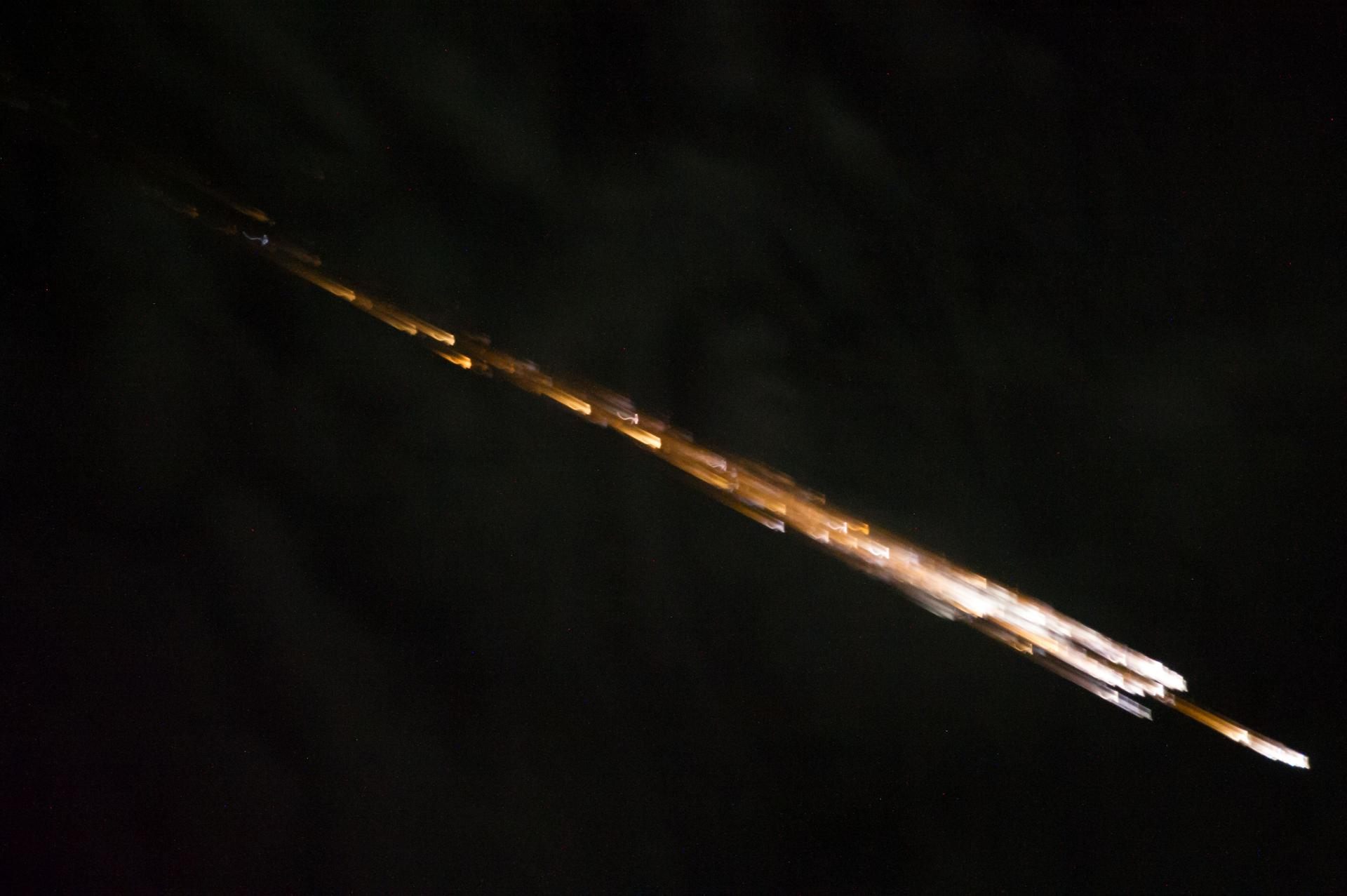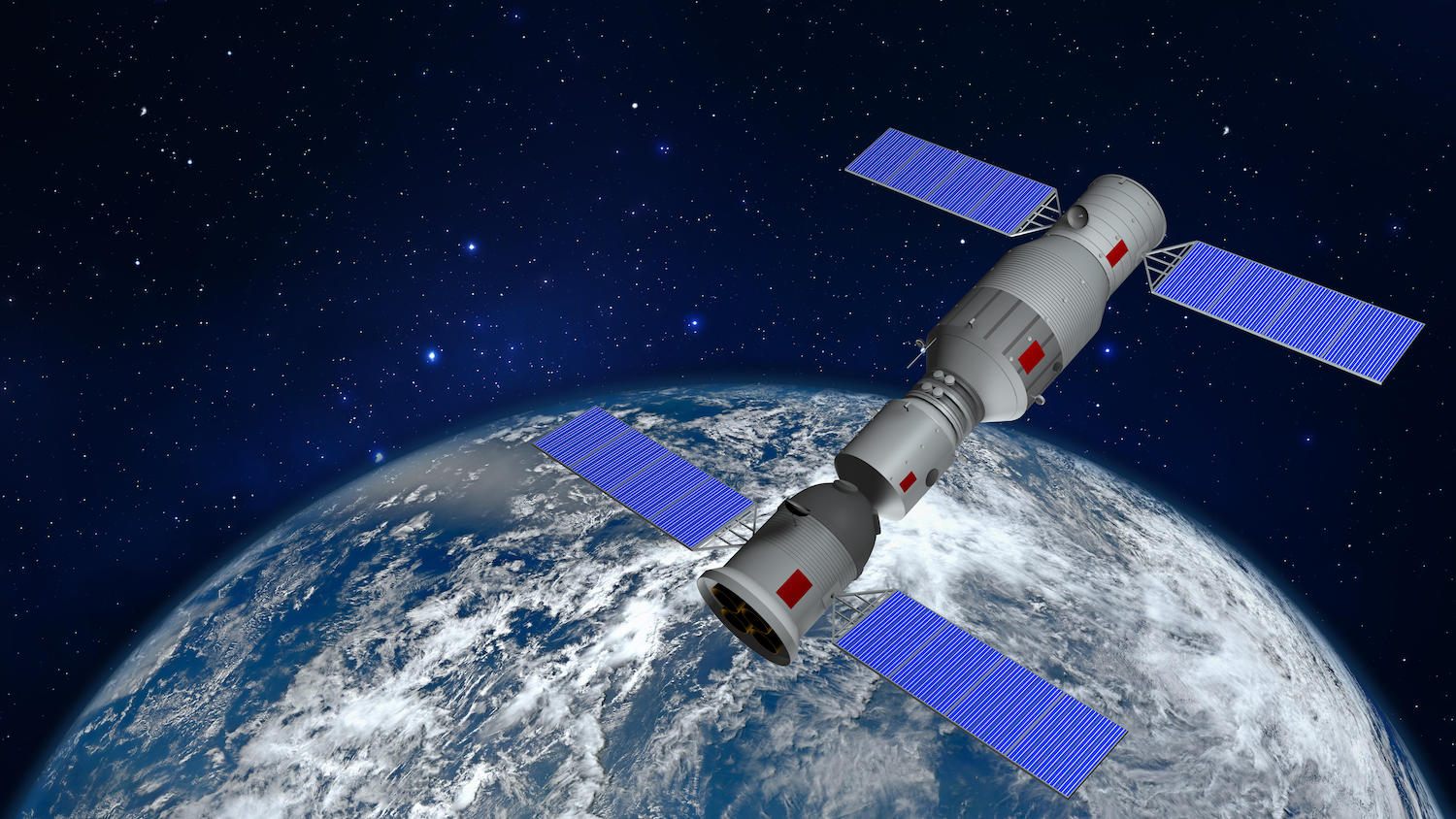Meet an Amateur Astronomer Tracking the Falling Chinese Space Station
Marco Langbroek spends a lot of time at his computer, following Tiangong-1’s every move.

The weeks and days before the Chinese space station’s imminent reentry into Earth’s atmosphere have been busy ones for Marco Langbroek. He’s a trained archaeologist and a passionate amateur satellite tracker, and his followers want to know when and where Tiangong-1 will chart a fiery course through the sky. In pursuit of an answer, he’s logged long stretches at his computer in the Netherlands, fiddling with predictions about what’s going on up there.
One thing’s for sure: The space station is falling. Tiangong-1, which launched in 2011, stopped communicating with ground control in March 2016. With no way to bring it down into a controlled descent, scientists have only been able to wait for its orbit to decay. It’s expected to tumble to the ground or ocean sometime in the next few days.
Both amateurs like Langbroek and government agencies want to figure out where and when it will arrive. For weeks, Langbroek has been posting daily forecasts on Twitter and his blog. His mission is both aesthetic and logistical. Like a meteor, it could leave a remarkable streak across the sky; if the weather cooperates, anyone in the vicinity will be able to see it with the naked eye. And when it touches down, any pieces that weren’t incinerated will need to be found and possibly repatriated to China. (Under the Outer Space Treaty of 1967 and the 1972 Convention on International Liability for Damage Caused by Space Objects, anything falling from space is the property of the country that put it up there.)


Predicting its path and crash site is no simple task. There’s a lot of data to wrangle, and some wildcard variables, such as the thickness of the atmosphere where it enters, which can change with little warning (as the result of a solar flare, for instance). Tiangong-1 itself is a variable, because while its surface area is known, the oblong space station could be spinning, and its drag will be affected by its orientation. Without detailed images, it’s hard to know for sure which end is coming down first.
Depending on whom you ask, these unknowns are either a headache or fuel for the chase. Langbroek gets a kick out of them. Each day, he pulls raw orbital data from the Joint Space Operations Center tracking network. He also uses the free programs SatAna and SatEvo, and a model atmosphere from NASA to forecast time and location. He often models multiple scenarios—adjusting for different orientations, for example. Even so, as late as Wednesday evening, the geographic estimate for Tiangong-1’s reentry was vast—spanning thousands of miles and multiple continents.
The lines on this map are where #Tiangong1 can come down within the current +- 1-day uncertainty window.
— Dr Marco Langbroek (@Marco_Langbroek) March 28, 2018
Cities with populations > 1 million people are also marked on the map, and those on the lines could see a reentry over them. The risk to these cities is however *very small* pic.twitter.com/QFnoLx1dbV
As the orbital decay continues, the estimated time and location have gotten more precise. Since March 13, Langbroek’s predicted margin of error has decreased from plus-or-minus six days to less than a day. But specifics are still elusive and things could change dramatically. As it descends, the space station is moving around 17,000 miles per hour, and completes an orbit every 89 minutes. “Even if we are working with orbits only two or three hours before the actual reentry, we still have uncertainty of many thousands of kilometers,” he says.
Langbroek’s calculations often align pretty neatly with ones that have been issued by various official bodies, such as the U.S. Air Force Joint Space Operations Center. But they have just as much chance of being wrong as anyone else. The European Space Agency, which is also making reentry forecasts, admitted as much: “At no time will a precise time/location prediction from ESA be possible,” they stated. A miscalculation of just, say, 20 minutes for reentry time could put the falling space station on another continent.

When it comes to tracking satellites and other space junk, “historically, amateur [astronomers] have served an incredibly important purpose,” says Lisa Ruth Rand, a postdoctoral fellow in history and a space junk scholar at the University of Wisconsin-Madison. “They were the only ones in the game at first.” Legions of teenage and adult space enthusiast-nerds mobilized in 1957 to track Sputnik I through Operation Moonwatch. Today, Langbroek and others also suss out and keep tabs on “dark sats”—surveillance satellites and other objects that are visible, but mysterious in purpose and incognito by design. “You can get a lot of information from amateurs more easily, probably, than from the state surveillance network,” Rand says. “[They’re] basically revealing secrets—things that the government can’t tell us, or won’t tell us.”
Langbroek is in it for the curiosity, the challenge, the puzzle of it, but some amateurs are more interested in securing a front-row seat to a reentry. In contrast to Tiangong-1, other falling satellites sometimes have a more controlled descent and regular shape, which can make reentry easier to predict and plan for.
Authorities often try to position these reentries over the vast, sparsely populated Southern Pacific Ocean. If you’re in that vicinity, “You might have a bigger chance of seeing something, but then again, they choose that area because they assume nothing is there,” Langbroek says.
When reentry dates and locations are known well in advance, some intrepid amateurs or retired professionals have spotted business opportunities. When the Russian space station Mir reentered the atmosphere in 2001, 50 people paid an average of $6,500 for a window seat on a chartered flight to watch the show (only half the window seats were sold, since the spectacle would be on one side only). The pilots vowed to stay outside the danger zone, but close enough for a great view—roughly 200 miles from the falling space station, ABC News reported. The director of the Russian Aerospace Agency, Yuri Koptev, stressed that this was a bad idea. Tourists flocking to the site of a descent defeat the purpose of orchestrating it over a less-populated area. “Apparently these people are driven by a spirit of adventure,” Koptev told the New York Times, “but we would recommend that they not go there.”
Some clearly ignored him. American brothers Rick and Bob Citron led an expedition to Fiji. “God bless all of you who think we’re on a wild goose chase,” Bob, a retired engineer, told the South Florida Sentinel. A crowd of roughly 200 enthusiasts gathered on a beach and clapped as the space station flashed overhead. Ten seconds later it was gone—en route to a watery resting place.

When a reentry approaches, as one is right now, updates zoom back and forth on Twitter and email lists for amateur astronomers. Some sites, such as the Virtual Telescope Project or SatView, run live-streams or share real-time images and maps. Most enthusiasts are probably more likely to see it that way—racing across their screens rather than above their heads.
Langbroek has yet to see a reentry in person, though he often gets his hopes up. “I’ve tried on several occasions,” he says. In 2013, he was optimistic about the reentry of the Gravity Field and Steady-State Ocean Circulation Explorer; it was forecast to pass over the Netherlands. He drove out to a rural road, pulled over, and craned his neck. No luck—he missed it by a few hours. Another time, the sky happened to be blotted out with clouds, which obscured the show. Earlier this week, a different reentry was visible from Italy, just a little too far from his home country. “That was one I narrowly missed,” Langbroek says. “But one day I will be successful.” It may be this weekend. Or maybe not.













Follow us on Twitter to get the latest on the world's hidden wonders.
Like us on Facebook to get the latest on the world's hidden wonders.
Follow us on Twitter Like us on Facebook